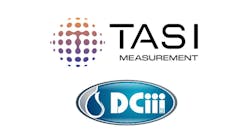Emerson Process Management applied its Smart Wireless solution to monitor river water temperature at the Lenzing Fibers mill in Heiligenkreuz, Austria. Installation of the wireless temperature transmitters in Emerson’s self-organizing wireless network enabled the company to meet local government regulations related to the temperature of water discharged into rivers and watercourses.
"The Emerson technology was both easy to install and integrate and has been extremely reliable in terms of data transfer. When all the transmitters were in place the network offered us a communications reliability of 100%, which is very impressive," said Wolfgang Gotzi, head of the Automation and Maintenance Department at Lenzing Fibers. "We are currently looking at other applications where Smart Wireless can be applied."
Lenzing Fibers, winner of the European Awards for the Environment, is the world’s largest producer of Tencel® fibers. The Heiligenkreuz fibers plant uses water drawn from a local river for cooling purposes. Local environmental regulations require that the water returned to the river must not be more than three degrees Celsius higher than the water extracted. The regulations also stipulate that the company must maintain a constant check and record of the water temperature at both inlet and outlet points.
"Because of the distance of the River Lafnitz from the control room and the fact that people are free to walk by the river, we would have had to dig a trench for the cabling and this would have been very expensive," said Gotzi. "The cost of installing wireless is much lower and has made this project possible."
Prior to the regulation being introduced, Lenzing was already monitoring the water temperatures manually via daily visits to the river. However, to meet the environmental regulation, there was a need to improve the reliability of the results, and the measurements had to be stored and readily available for inspection. By implementing a solution that enabled online measurements, Lenzing Fibers was presented with an opportunity to reduce operations costs by eliminating the number of trips to the river, while at the same time streamlining the reporting process.
The temperature of the water extracted from the river is transmitted wirelessly via Emerson’s Rosemount wireless temperature transmitter, to a Smart Wireless gateway. The gateway is positioned on an external wall of the pump station control room, 200 meters away. A second wireless transmitter is installed where water is returned to the river, and a third transmitter is 200 meters downstream where it measures the temperature of the remixed water after the return point.
A fourth transmitter is currently used as a weather station and is situated by a nearby lake that is used as a cooling water reserve. This device acts as a repeater and provides additional paths for the self-organizing network, ensuring communication reliability.
Emerson’s AMS Suite: Intelligent Device Manager is used to manage the new Smart Wireless devices, enabling the technicians to configure the devices, run diagnostic checks and monitor alarms and alerts. AMS Suite is also used to manage and store calibration information.
The Smart Wireless network is integrated into Lenzing Fibers’ existing control system, and the temperature information is stored in a data historian in order to meet the requirements of the environmental regulations.
Emerson’s self-organizing technology delivers high communications reliability and makes addition of more measurement devices easy. Each wireless device can act as a router for other nearby devices, passing messages along until they reach their destination. If there is an obstruction, transmissions are re-routed along the network until a clear path to the Smart Wireless Gateway is found. As conditions change the wireless network simply reorganizes and finds a way to get its signals through.

